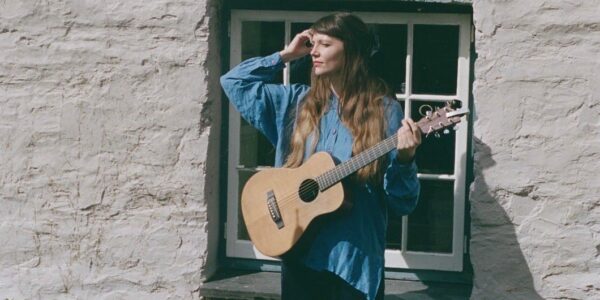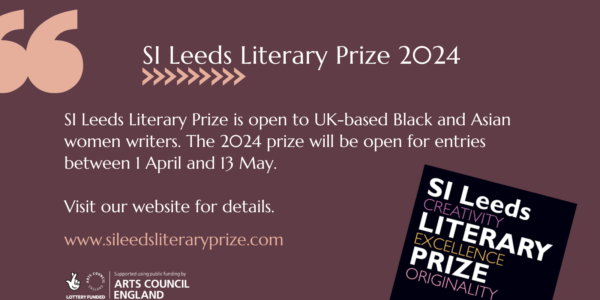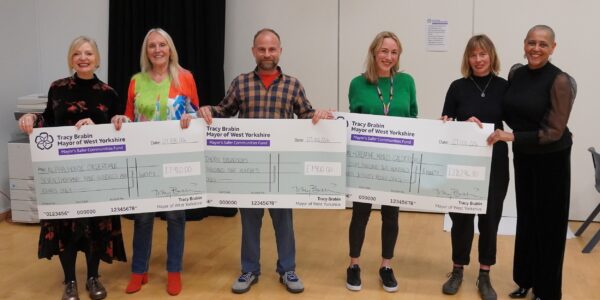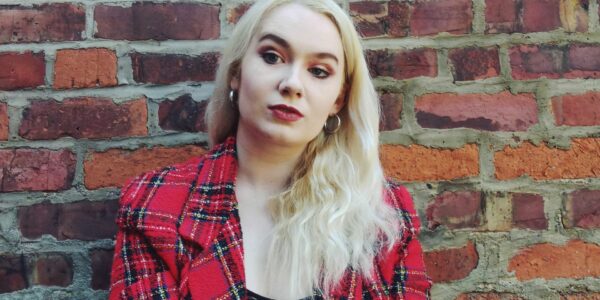Hannah Lowe – The Stories We Tell
18 May 2020 / The Stories We Tell
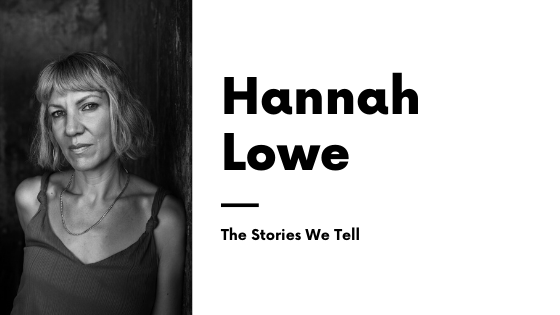
Electric Silences
My instinct to become a poet emerged from a desire to tell stories. Perhaps I should have written short fiction or tried my hand at a novel, but there was something about telling stories through poetry that strongly appealed to me, probably because the first poems I read and loved told stories. Philip Levine, one of my favourite writers, often tells compelling stories in his poems. ‘The Mercy’ (1999), for example, opens like this:
The ship that took my mother to Ellis Island
eighty-three years ago was named “The Mercy”.
She remembers trying to eat a banana
without first peeling it and seeing her first orange
in the hands of a young Scot, a seaman
who gave her a bite and wiped her mouth for her
with a red bandana and taught her the word
“orange”, saying it patiently over and over…
Could this be the beginning of a piece of prose fiction? I think yes, if it weren’t for the line breaks – which reminds me of one of the most basic, elemental definitions of poetry, as opposed to any other form of writing – it uses lineation.
But Levine doesn’t do what a novelist might – tell, from the moment of his mother’s arrival, the story of her life. He instead jumps ahead in time and space to the narrator as an old man in a ‘windowless room’ in a New York library, reading about The Mercy in the context of other migrant arrivals. The poem enacts the difference between the inherited story of his mother’s difficult experience of migration, and the objective rendering of the ship’s arrival in a history book, where it is one ship mentioned among many others. We don’t need the whole story. The whole story is not the point.
It is this use of ellipsis that appeals to me both in reading and writing poems. I’m intrigued by what the white space around a poem can carry, by what can be left out and how this might be filled in by the reader. And, because of this kind of restraint on the part of a writer, each reader’s imagination has the opportunity to be active and questioning rather than passive and receiving, just as it is in real life. This, I believe, is a more satisfying reading experience.
I think short stories often work with this same compression, economy and ellipsis. Maybe that’s why it’s often said that a poem and a short story have more in common than a short story and a novel. Both forms often work with scant materials. But among the materials at the poet’s disposal, the image is, in my view, the most dynamic and kinetic. In Levine’s poem, the orange is the central image, returned to at the end, symbolising the strange new world the young girl enters, materially and linguistically. The red bandana also carries great symbolic power – it is a first kind gesture, an early moment of connection. These images, left alone, unfettered, are also catalysts for the reader’s active imagination – the image ricochets beyond the scope of the page and continues reverberating in the reader’s mind.
The first poem I ever wrote, ‘The Receipt”, was about an inherited story, like ‘The Mercy’, and features a central image: a hand-written receipt. My father was raised in Jamaica by his father, who, by all accounts, was a cruel, violent man. He neglected and abused my dad, making him a lackey to work in the grocery shop he owned. My dad believed that his father had ‘bought’ him from his impoverished mother, precisely for this purpose, and believed he had seen the receipt for his own sale among his father’s paperwork.
This is one of many traumas carried by my dad: his rejection by his mother, his dad’s epic and brutal violence towards him; more broadly, the trauma of growing up in an unjust colonial environment which denigrated and oppressed people based on the shade of their skin. These traumas cannot be neatly divided into the public and the personal. Both of my grandparents’ behaviours can be read as legacies of patriarchal imperialism. My grandmother would have known the near impossibility of rising beyond the common labouring rank of Afro-Jamaicans, a painful knowledge compounded by the shame of having a baby out of wedlock. As for my grandfather, I am nearly certain that his violence towards my father was in part indebted to the general disdain the Chinese community at that time felt towards children born from miscegenation with the black population – a disdain enabled, if not encouraged, by the social pigmentocracy in which they lived.
So many compounding traumas. It is no wonder my dad never spoke of them. It was not through him that I knew the story of the receipt, but somehow it passed down through the family, and haunted me for years, until I enacted it in writing, perhaps as a way of containing it. For me, there is something about the shape and size of the poem –– short, usually, compared to prose – that augments this potential for encapsulation, enabling me to take painful experiences and hold or reframe them in the poem’s walls. The poem reimagines the moment my father discovered the receipt:
At school they said that slavery
was long time done, but were they sure?
His name was in the kitchen drawer
He stared down at his sunbrown skin
and which parts belonged to him
Although there was much I didn’t know about the story of the receipt, the poem didn’t need detailed knowledge, but could work instead with space and absence. The central image of the receipt and the ghost-thread of a story, were, I hope, enough.
In the title poem of Chick (2013), my first collection, the near-absence of knowledge about my father is the organising principle. I wanted to write about our relationship, but also to emphasise how little understanding I had of his life. He earned his money through gambling, sometimes playing ‘straight’, but often, in his own words, playing ‘crooked’. Alhough he lived with us, he regularly disappeared overnight, sometimes for days, to the card tables of the East-end, or further afield – elsewhere in England, tournaments in Europe. He spoke very little about his work. Card-sharping, in the way my dad did it, was not without skill, but it was illegal.
I wanted the poems to capture his elusive presence-absence in my childhood. Here are the first lines of ‘Chick’:
We talked about you all the time.
Dan said he saw you ironing cellophane.
I said you’d let me hold a thousand pounds.
We found a hollow-soled shoe.
My cousins loved your tricks.
They’d follow the lady, search your sleeves,
blow luck into your first. Mum said you were a croupier.
At school I said you drove a cab.
The poem lists facts, collated without analysis. The white space around the text is the place where the reader can actively imagine, actively try to stitch these parts together, asking, as I did – who was this man?
*
Anne Carson is a master of narrative in poetry. One of my favourite poems of hers, ‘The Glass Essay’ (1995), interweaves narratives, almost subsuming the personal and intimate story of the speaker’s break-up with a man called Law within a more public story about the lives of the Brontë sisters. These two narratives are mingled throughout the poem, leaving the reader to connect the ideas, to see the way in which these different threads might relate.
The speaker is visiting her mother, with whom she has a difficult relationship. Her mother is unsympathetic about break up: ‘That psychotherapy’s not doing you much good is it? / You aren’t getting over him’. The speaker has brought books with her, including a biography of the Brontës. The poem moves in a way which resembles the meandering of thought – from considering the lives and heartache of the sisters, to her own reflections on the disintegration of her relationship with Law:
What are the imperatives
that hold people like Catherine and Heathcliff
together and apart, like pores blown into hot rock
and then stranded out of reach
of one another when it hardens? What kind of necessity is that?
The last time I saw Law was a black night in September.
Autumn had begun,
my knees were cold inside my clothes.
A chill fragment of moon rose.
He stood in my living room and spoke
without looking at me. Not enough spin on it,
he said of our five years of love.
The poem is a substantial long-form text which has room to manoeuvre in these complex ways, jumping temporally and spatially across centuries and continents. This is also the potential in sequences of poetry of any length – from a few interconnected poems, to a chapbook, to a whole collection. Sequences have dynamic powers as story-telling vehicles. They offer the poet the chance to build and develop a story; to come at it from different angles; each poem, a building block in a broader narrative. In the sequence, however long, ellipsis is still often key. Not only does the space within the poem carry possibility and energy, the gaps between the poems themselves do as well.
The poems in Chick emerged one by one. Some are ekphrastic, written in response to photographs of my dad; some are about the iconography of gambling, some remember his gambling cronies; others are elegies about his illness and death. When I had enough poems, I began to look at how they could sit with each other and tell a longer, deeper story about our relationship. Placing the poems together like this – looking for both continuity and juxtaposition – is an essential part of the creative process when forming a collection. It allowed me to see how images and ideas might be carried over texts, as well as where the gaps might be too big for a reader to straddle, showing me where another poem might be needed.
In writing this essay, I’ve been thinking of sequences which work in the way I’ve described, deepening and broadening a narrative, using the space within and between the poems. Bruce Snider’s sonnet crown – or sonnet sequence – ‘Devotions’ (2013), immediately springs to mind. Through interlinking sonnets, it tells the story of a gay couple’s move to the rural American landscape to become farmers, and the challenges they face. These lines are from the first sonnet:
1
Last night the piglets fought then suckled
in the barn. Still no word. Our one cow
grazes but won’t come in. The pamphlets say:
Patience is required. I say, let’s try again
but John blames the state, the neighbors, the way
we wrote our bios, filling out the forms.
In the fourth sonnet, the picture expands, as the speaker begins to realise the environment around them isn’t friendly, but hostile:
Even I doubt how a man can mother
when I see the neighbor shout, chuck a stone
at his son. When I shoot him a look, he turns:
mind your own business
In the final sonnet, the speaker expresses a sense of resignation to these new difficulties, but also finds comfort in his relationship. These are the final lines:
sometimes
it’s just the peeling shed in gray weather,
the leather harness softened, then gone rough.
All day today the back pond will teem with carp.
The clover will brighten. For now we lie together
into late morning. Some days, it is enough.
Over seven sonnets, Snider is able to create a sense of time passing, of the seasons changing and expectations diminishing, finally leading to the evolution of a new emotional state. It is both the poems themselves and the space between them, that allow this to happen convincingly and emotively.
*
Perhaps all full collections of poetry tell some kind of story, revealing to the reader something about the poet and their concerns. Verse novels, in particular, make explicit their aim to blend poetry with story-telling. But there are also many poetry collections that are deliberately focused on narrative, where the poet has set out to tell a singular story. Three that come to mind immediately are Sharon Old’s Stags Leap (2012), which narrates her painful divorce; Rita Dove’s Thomas and Beulah (1986), a semi-fictionalized chronological story of her maternal grandparents; and Douglas Dunn’s Elegies (1985), which tells the story of his wife’s death from cancer.
Perhaps it is no coincidence that the ones I think of are meditations on family and relationships, my own concerns. They express poetry’s most persistent themes – love and the loss of love. But of course, there are other subjects. Kei Miller’s three collections, and especially The Cartographer Tries to Map His Way to Zion (2014), are strongly narrative. Miller has said he approaches his collections in the same way he would a novel, with a full story in mind. Sometimes characters form the central pivot around which a collection’s narrative emerges, such as in Jacob Polley’s Jackself (2016), or Helen Ivory’s Waiting for Bluebeard (2013). The poet has choices, and can reach into the poet’s tool-box to make decisions about voice and chronology, but often, these collections are as much about what is unsaid as what is said.
In the house where I grew up, where mystery and silence abounded, there was always a sense of things being off-kilter, matched with an equal sense of not knowing what these were. My father – lacking any education or opportunity, but growing up in a society that revered Britain and its institutions – wanted me to be ‘cultured’, which meant good schools, dance lessons, piano lessons. Much of our time was spent with him ferrying me to extra-curricular activities. Sometimes he just invited me to accompany him on a drive into town, probably, I now realise, to drop off some item of contraband, or a pair of dice he had loaded for another gambler. I always went with him, but we never spoke on these journeys. An electric silence sat between us, ripe for the possibility of connection, but never realised. That same silence is what I believe the negative white space around the poem can hold – the fizzing potential for connection and understanding.
Find out more about The Stories We Tell.
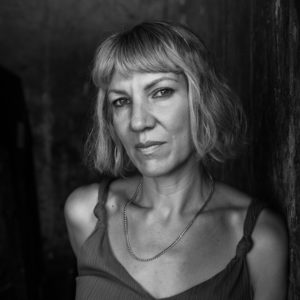 Hannah Lowe is a writer and academic in London, UK. Her first poetry collection, Chick (Bloodaxe, 2013), won the Michael Murphy Memorial Award for Best First Collection and was short-listed for the Forward, Aldeburgh and Seamus Heaney Best First Collection Prizes. Her second collection is Chan (Bloodaxe, 2016). In 2014, she was named as one of ‘20 Next Generation British Poets’, an accolade awarded by the Poetry Book Society once a decade. She has also published four chapbooks: The Hitcher (Rialto 2012); R x (sine wave peak, 2013); Ormonde (Hercules Editions 2014); and most recently, The Neighbourhood (Outspoken Press, 2019). She has been Writer in Residence at Keats House, and currently lectures in Creative Writing at Brunel University.
Hannah Lowe is a writer and academic in London, UK. Her first poetry collection, Chick (Bloodaxe, 2013), won the Michael Murphy Memorial Award for Best First Collection and was short-listed for the Forward, Aldeburgh and Seamus Heaney Best First Collection Prizes. Her second collection is Chan (Bloodaxe, 2016). In 2014, she was named as one of ‘20 Next Generation British Poets’, an accolade awarded by the Poetry Book Society once a decade. She has also published four chapbooks: The Hitcher (Rialto 2012); R x (sine wave peak, 2013); Ormonde (Hercules Editions 2014); and most recently, The Neighbourhood (Outspoken Press, 2019). She has been Writer in Residence at Keats House, and currently lectures in Creative Writing at Brunel University.
Photo credit: Dirk Skirba
